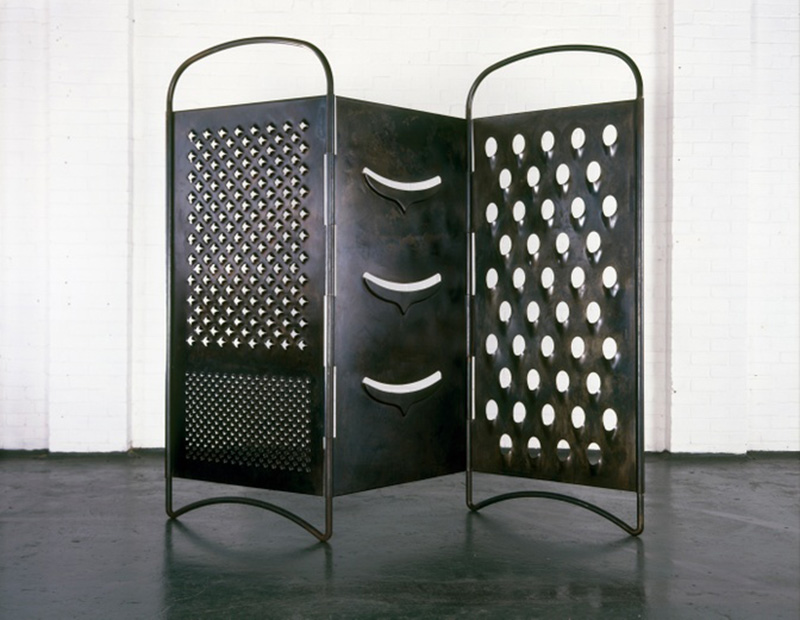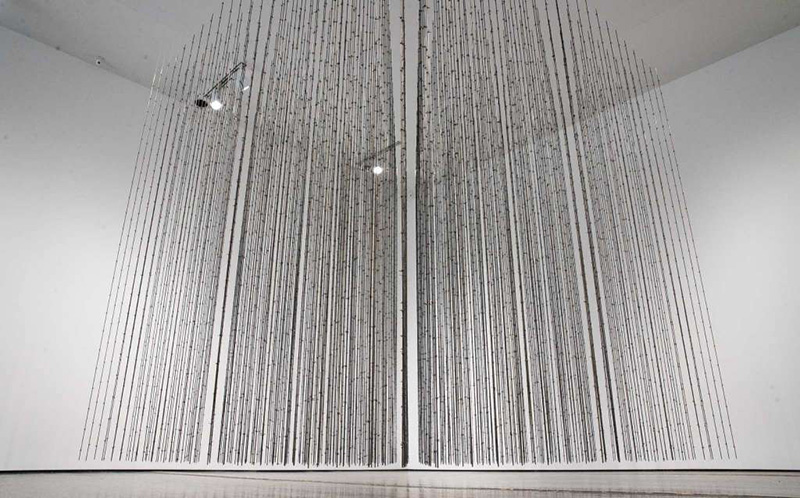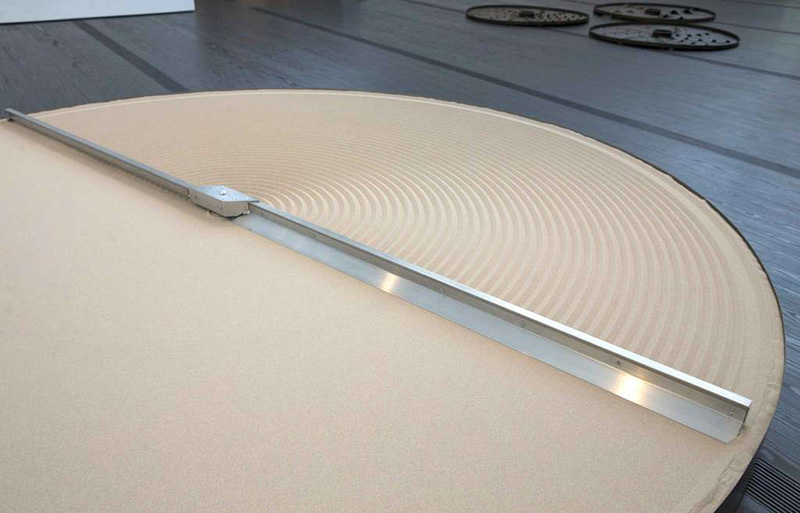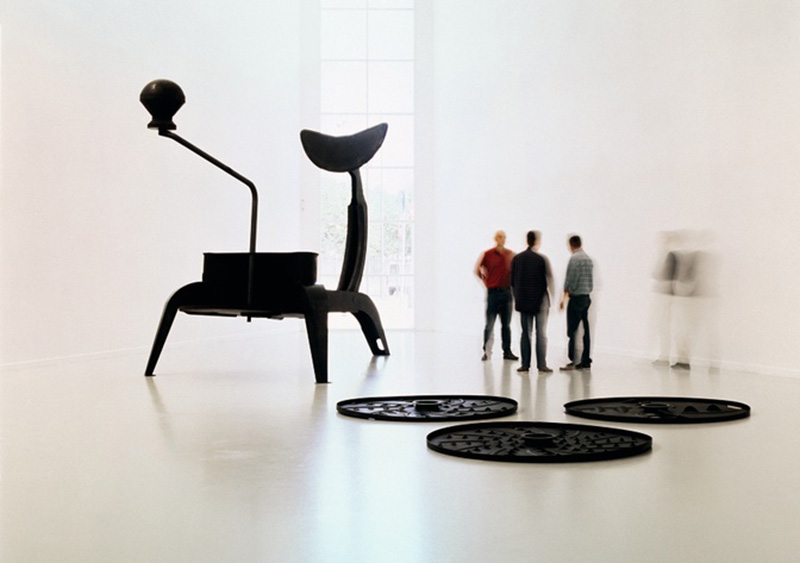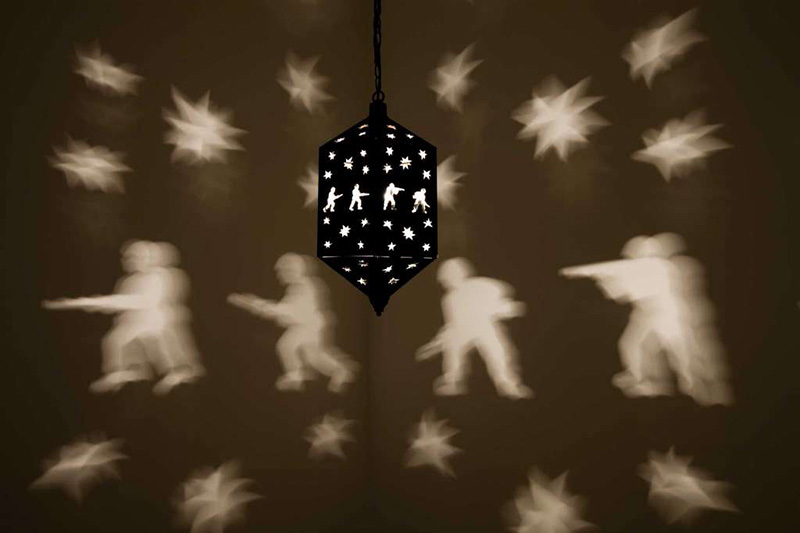ART-PRESENTATION: Mona Hatoum-Terra Infirma
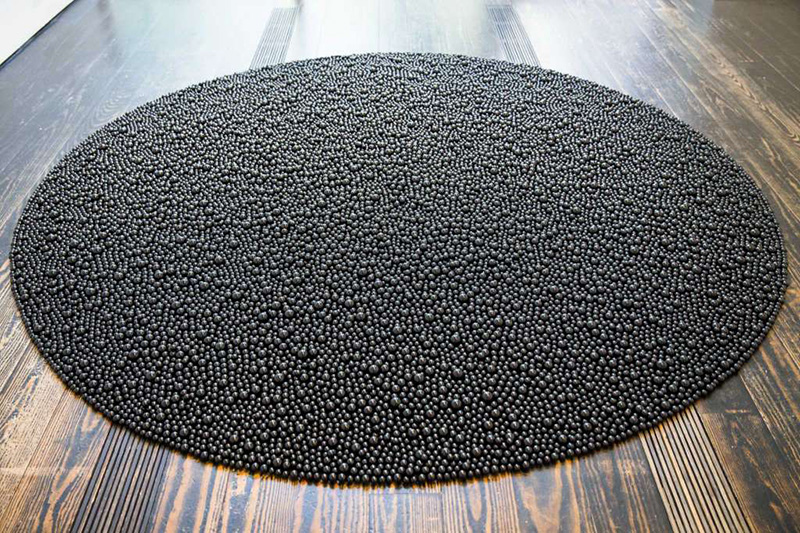 Mona Hatoum creates discomforting, challenging work that reveals the contradictions and uncertainties of our complex, confounding world. Using domestic and other familiar objects, Hatoum creates installations and sculptures that may simultaneously evoke fear and fascination, or beauty and revulsion, and that could hardly be more pertinent to our era of global migration and political uncertainty.
Mona Hatoum creates discomforting, challenging work that reveals the contradictions and uncertainties of our complex, confounding world. Using domestic and other familiar objects, Hatoum creates installations and sculptures that may simultaneously evoke fear and fascination, or beauty and revulsion, and that could hardly be more pertinent to our era of global migration and political uncertainty.
By Dimitris Lempesis
Photo: The Menil Collection Archive
“Mona Hatoum: Terra Infirma” is the artist’s first major solo exhibition in the United States in more than twenty years, the exhibition presents 30 major sculptures and installations from North American and European collections. In the exhibition are on presentation 30 major sculptures and installations from North American and European collections and also a number of smaller sculptures and works on paper. Hatoum has long been interested in the power of unexpected encounters and material juxtapositions. Over the course of her more than forty-year career she has repeatedly used Surrealism as a point of departure. In a time of global migration, displacement and political uncertainty, this provocative connection is particularly relevant. Highlights include work imbued with a sense of physical danger that challenge the idea of home as a place of rest and comfort. “Homebound” (1999) is a room-size assemblage of electrified household objects and furniture threaded together by a crackling wire of live electricity. Other works depart from the Surrealist notion of the uncanny. “La grande broyeuse (Mouli-Julienne x 17)” (1999) based on an old-fashioned rotary food mill from her mother’s kitchen that Hatoum used to make potato chips when she was a child. Super-sized to 17 times the original dimensions, the sculpture resembles a giant scorpion. And the scale matters: It’s designed so that an adult could coil up in a fetal position inside the bowl before being sliced to pieces. The 400 barbed-wire strands of “Impenetrable” , a response to Jesús Rafael Soto’s luminous and delightful rubber “Penetrables” appear to dangle weightlessly from the ceiling, barely visible from a distance, hung in a meticulous grid whose openings seem to move as viewers walk around it. The barbed wire itself is loaded with contradictions, designed both to keep people out, and in. Specially constructed rooms entice visitors into other kinds of unstable environments. The rotating tin lamp “Misbah” punched with images of soldiers and explosions instead of ornate arabesque patterns, immerses viewers in a disorienting space of light and shadows. “& and -” is a circular sandbox with a metal blade that rotates on a central axis. The blade has teeth on one end and a smooth edge on the other, so its continuous movement creates concentric ridges and erases them. Hatoum conceived the work as a small kinetic prototype, “Self-Erasing Drawing” in 1979, when she was still an undergraduate. She made a larger but temporary version for a festival in Japan in 1994, then 10 years later worked with a German craftsman to perfect the current version, which holds 2,400 pounds of sand. It represents a cycle of opposites that need each other to exist.
Info: Curator: Michelle White, The Menil Collection, 1533 Sul Ross Street, Houston, Duration: 13/10/17-23/2/18, Days & Hours: Wed-Sun 11:00-19:00, www.menil.org
